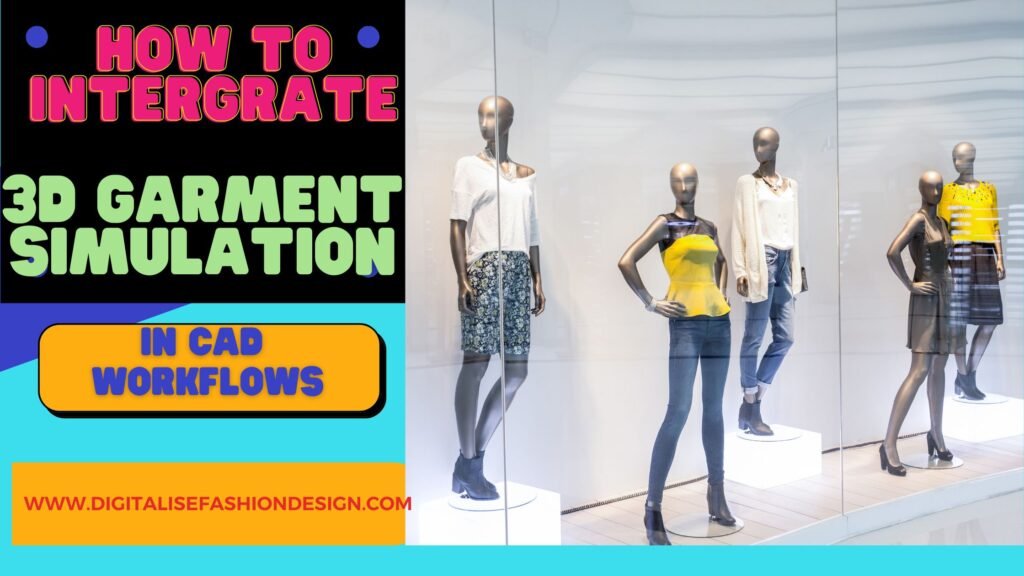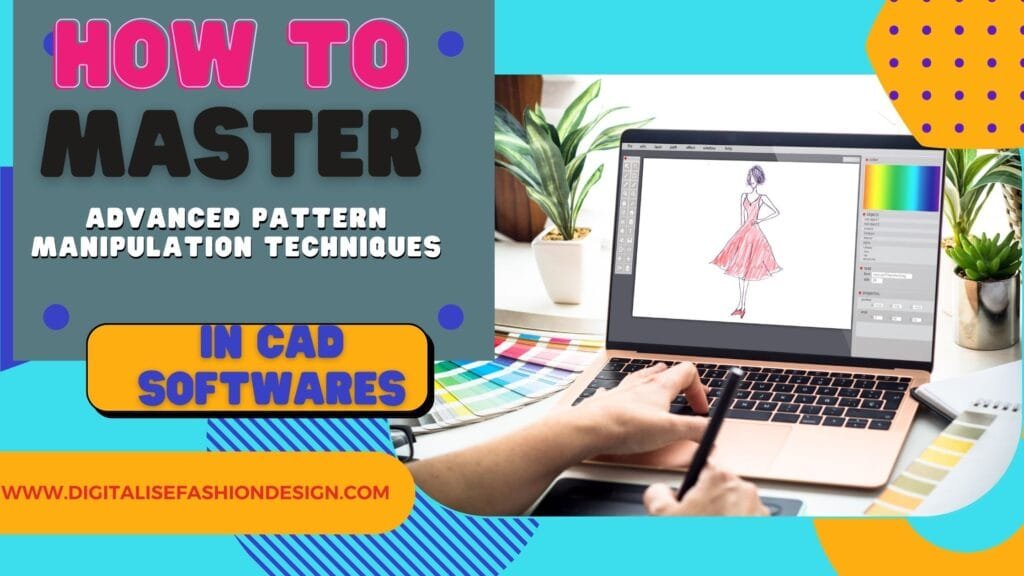Unlocking the Power of Parametric Design in CAD Pattern Making Software

Introduction
Parametric design in CAD pattern making is transforming the way designers work, especially in fields like fashion, footwear, automotive, and aerospace.
By enabling precise, flexible, and automated design processes, parametric design has unlocked the potential of CAD (computer-aided design) in pattern-making software.
But what exactly is parametric design, and how does it impact the world of pattern making?
Let’s explore how you can leverage this cutting-edge approach to streamline your work.
What is parametric design in CAD pattern drafting?
At its core, parametric design is a method of design where dimensions, relationships, and features are controlled by parameters.
These parameters allow designers to modify parts of a model easily without having to redesign the entire project. Think of it like a set of rules that define the relationships between different elements, making it possible to adjust one aspect of the design and see all connected parts change accordingly.
Why is parametric design in CAD important?
For anyone working in pattern making, parametric design in CAD can significantly boost efficiency and creativity. It provides a level of precision that is difficult to achieve with manual or traditional digital methods.
Designers can create complex patterns with just a few adjustments, and more importantly, these designs are flexible enough to accommodate changes without starting from scratch
Understanding CAD Pattern making Software
What is CAD Pattern Making Software?
CAD pattern-making software is specialized software used to create, modify, and optimize designs for garments, footwear, and other industries requiring patterns.
It replaces the need for traditional drafting by hand, allowing for more detailed and accurate pattern creation.
How Has CAD Revolutionized Traditional Pattern Making?
How has CAD influenced traditional pattern making?
Before the advent of CAD, pattern making was done manually, often involving labor-intensive processes that were prone to errors.
CAD software changed the industry by automating many aspects of the design process, improving accuracy, and reducing the time required to bring a design to life.
The core concepts of Parametric design
Definition and Explanation of Parametric Design
In parametric design, parameters such as length, width, angles, and curves define the structure of the pattern. These parameters can be adjusted independently or in relation to one another, which makes modifying a pattern much faster and more efficient.
Key Features of Parametric design in CAD
Key Features of Parametric Design in CAD
Some of the most essential features of parametric design in CAD include:
- Associativity: Changes in one part of the design automatically update connected parts.
- Constraints: The designer can set limits and conditions on how a design behaves.
- Variables: Dimensions and other attributes are stored as variables that can be reused throughout the design process.
Benefits of Parametric Design in Pattern Making
Benefits of Parametric design in CAD
Precision and Accuracy in Design
By controlling every aspect of a pattern through parameters, designers can ensure that their designs meet exact specifications without errors.
Flexibility and Efficiency
When working on a large project, parametric design allows for quick adjustments. For example, changing the size of a collar on a shirt pattern can automatically update other related components like the shoulders or sleeves.
Automation in Repetitive Tasks
Parametric design automates repetitive tasks, saving hours or even days of manual editing.
Key Components of Parametric design in CAD
Variables and Parameters
The core of parametric design is the use of variables and parameters, which define the geometry and structure of the pattern. These variables can be modified to create new versions of a pattern almost instantly.
Design Constraints
Constraints are rules that define how different parts of a design relate to each other, ensuring that changes remain consistent across the entire model.
Parametric Relationships Between Parts
This approach ensures that changes to one part of the design will trigger automatic updates to connected elements, maintaining proportionality and design intent.
How this kind of designing technique Enhances Efficiency
Reduced Design Time
By allowing designers to work more dynamically, parametric design slashes the time it takes to create complex patterns.
Quicker Adjustments and Modifications
Need to modify a design for a different size or style? With parametric design, it’s as easy as changing a few numbers.
Streamlined Prototyping
Once the design is complete, it’s easy to generate prototypes or pattern versions without additional work, which speeds up the entire product development cycle.
OTHER INTERESTING BLOG posts
Parametric Design vs. Traditional Design Approaches
Parametric Design vs Traditional Design Approaches
Differences in Workflow
While traditional design relies on manual updates to each part of a pattern, parametric design automates many of these processes, allowing for a more efficient workflow.
Impact on Creativity and Innovation
By reducing the time spent on tedious tasks, parametric design gives designers more room to innovate and experiment with new ideas.
Real-World Applications of Parametric Design in Pattern Making
Real-world Applications of Parametric Design in Pattern Making
Apparel Industry
From custom-fit garments to mass-produced fashion lines, parametric design enables quick adjustments for different sizes, styles, and fabric types.
Footwear Design
Footwear companies use parametric CAD software to create custom shoe designs that cater to the individual needs of consumers.
Automotive and Aerospace Sectors
Beyond fashion, parametric design is also used to create highly complex patterns for automotive interiors and aerospace components.
How to Get Started with Parametric Design in CAD Software
Learning the Basics
Start by familiarizing yourself with the parametric features of your chosen CAD software. Many platforms offer built-in tutorials and resources to help beginners.
Available Resources and Tutorials
Websites, YouTube channels, and online courses offer a wealth of resources for learning parametric design from scratch.
Challenges in Adopting Parametric Design
Steep Learning Curve
The complexity of parametric design can be intimidating for beginners, especially when learning how to manipulate variables and constraints effectively.
Software Costs and Accessibility
High-end CAD software can be expensive, making it difficult for small businesses or independent designers to access these tools.
Compatibility Issues with Existing Systems
Integrating parametric CAD software into existing workflows may present challenges, especially if older systems are not compatible with newer parametric tools.
Future of parametric designing CAD Pattern making
Advancements in AI and Automation
Artificial intelligence is expected to further enhance parametric design, automating even more aspects of the design process.
Integration with 3D Printing and Digital Fabrication
The future of pattern making will likely see increased integration between parametric design and 3D printing, allowing for rapid prototyping and production.
Expanding Use Cases Across Different Industries
As parametric design tools become more accessible, we’ll see them used in a wider variety of industries, from architecture to industrial design.
Conclusion
In conclusion, the amazing power of parametric design in CAD pattern-making software lies in its ability to transform the fashion and design industries.
By offering unparalleled precision, efficiency, and adaptability, it empowers designers to bring their creative visions to life while meeting the demands of customization and sustainability.
Whether it’s scaling patterns to fit diverse body types, experimenting with intricate designs, or streamlining production processes, parametric tools unlock new levels of innovation.
As technology continues to advance, embracing these capabilities ensures a future where creativity and functionality seamlessly intersect, transforming the way patterns are created and garments are produced.








